Science Explains#1: Does the Pacific Ocean mixes with the Atlantic Ocean?
Does the Pacific Ocean mixes with the Atlantic Ocean?
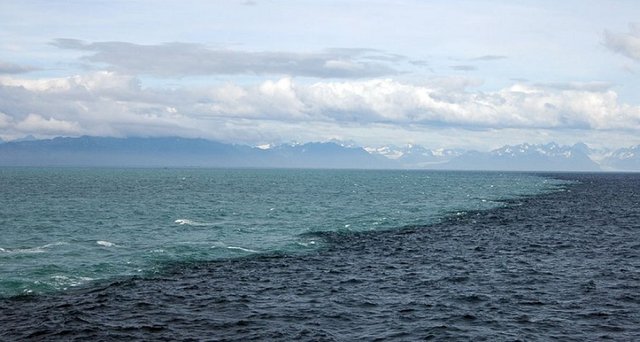
Many have speculated and rumors are going around about the above photo from the Gulf of Alaska showing the interface of the two vast oceans (Pacific and Atlantic) wondering if do they mix. "Science Explains" that at some point: Yes, they do Mix.
Many might say "Are you nuts? Of course they'll mix, they're both waters!" - It's not that simple. Given by their large water masses, these oceans also have different densities and current movements.
"What? How can they have different densities if they're both waters?" - The difference in their densities is a function of varying salinity concentration and levels of temperature.
Density is expressed as mass over volume:

Density is directly proportional to mass. And when you put more salt in water, the density of the water increases because the mass of the water increases. The greater the salinity, the greater its mass.
Salinity is described by how much salt is dissolved in a sample of water.
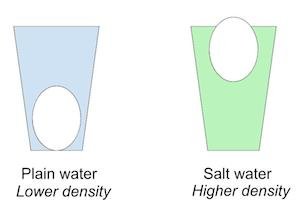
For example, two samples of water with the same volume but with different salinity levels will be added with egg, the water sample with more dissolved salt will therefore make the egg float better than the other as water with higher salt concentration will be more dense.
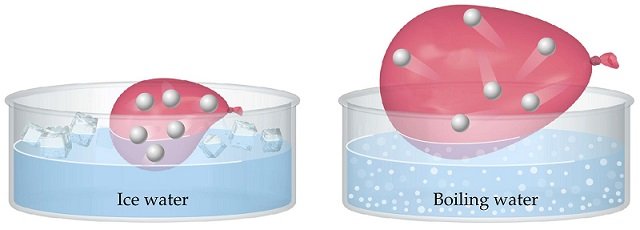
Normally, when water is heated, it will expand, therefore increasing the volume. Since density is inversely proportional to volume, greater volume will lower its density. When comparing two samples of water with the same salinity (or mass), the water sample with the higher temperature will therefore be less dense.
Furthermore, the distinct dispersion of their currents (surface and deep water current movements) makes it even more difficult for these water bodies to mix.
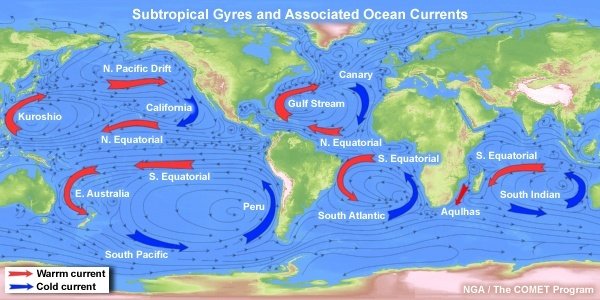
(In the picture, you can see the major current movements of the three oceans – Atlantic, Indian and Pacific ocean. Warm ocean currents in ‘Red’, and cold ocean currents in ‘Blue’.)
There is mixing going on at the interface between the two oceans. Notice their differences in color? (Sky blue color is typical of a shallow tropical shelf while deeper water may look dark blue, but if there are considerable blooms of phytoplankton, it may look green.)
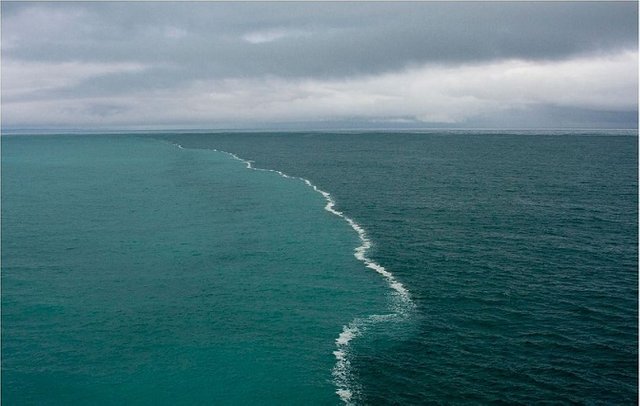
However, the rate of mixing isn’t strong enough to completely homogenize both water bodies together.
In a fluid system, mixing as big as the ocean has volume-scale and time-scale associated with it. The duration and amount of mixing depends on how big is the water body. Given by Prandtl’s mixing length hypothesis:
rate of mixing = (volume scale)^2/(time scale)
Where the rate of mixing is directly proportional to the square of the volume scale over time scale, implying to consider the size of the fluid parcels in a given time. If we are going to mix about 1 cubic meter volume of water, or even less, then the mixing rate will be accordingly shorter. When you increase the volume, it will also increase the duration to homogenize both the water masses. Therefore, completely mixing of larger water bodies such as oceans with different chemical and physical properties will take longer time. But they do mix, that's the point.
Refernces:
https://www.quora.com/Why-dont-the-Pacific-Ocean-and-the-Atlantic-Ocean-mix-at-their-borders
https://www.adn.com/science/article/mythbusting-place-where-two-oceans-meet-gulf-alaska/2013/02/05/
https://manoa.hawaii.edu/exploringourfluidearth/physical/density-effects/density-temperature-and-salinity
It will really take a long time for them to be completely mixed then. Love how you explain it with the formulas! haha witty!
Thank you :) I was trying my best to make everything easy to understand.
As a follower of @followforupvotes this post has been randomly selected and upvoted! Enjoy your upvote and have a great day!
@eileenbeach has voted on behalf of @minnowpond. If you would like to recieve upvotes from minnowponds team on all your posts, simply FOLLOW @minnowpond.